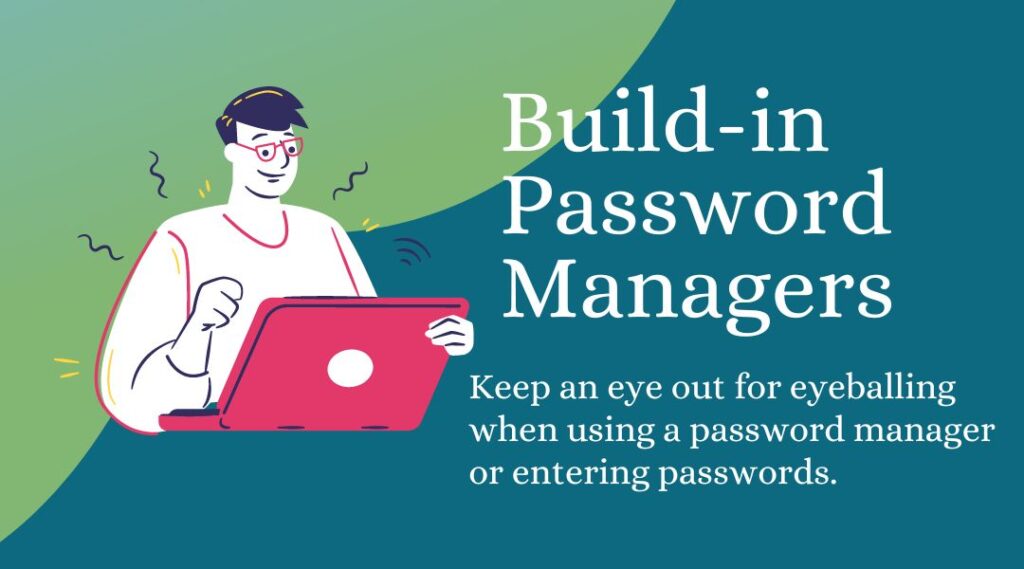
Built-in password managers are included in some modern browsers and devices and help users store, manage, and protect their passwords and other confidential information in a secure and convenient way. They offer convenience by not requiring an additional application to be installed and can make it easier for users to access and manage their passwords. They also offer security by storing passwords in an encrypted environment and protecting users from cyber threats. Built-in password managers can also help users comply with data privacy regulations. However, they may not offer all the features or security of standalone password managers and may not be suitable for all users.
The pros and cons of using built-in password managers.
Pros:
- Convenience: Built-in password managers are always available and easy to use since they are integrated into the device or browser you are using.
- Integration: Built-in password managers are seamlessly integrated into the device or browser, which can make them more user-friendly.
- Security: Built-in password managers can offer strong security measures such as encryption and two-factor authentication.
Cons:
- Limited functionality: Built-in password managers may have fewer features and options compared to standalone password management tools.
- Single device or browser only: Built-in password managers are typically tied to a specific device or browser, which means you may not be able to access your passwords on other devices or browsers.
- Potential vulnerabilities: As built-in password managers are integrated into the device or browser, they may be more susceptible to security vulnerabilities in those systems.
What happens if you leave your device without a lock screen?
If you leave your device without a lock screen and it has a built-in password manager, anyone who has physical access to your device will be able to access your passwords and other sensitive information if they are able to unlock your device. It is important to set a lock screen on your device to protect your personal information and prevent unauthorized access. This can be done through the settings on your device and may include options such as a PIN, password, or biometric authentication such as a fingerprint or facial recognition. By setting a lock screen, you can help to protect your personal information even if your device is lost or stolen.
Convenience and security benefits of using built-in password managers.
Using a built-in password manager can provide both convenience and security for your online accounts. They can automatically fill in the login information for websites, saving you the hassle of having to remember multiple passwords. In terms of security, built-in password managers use strong encryption to store your passwords, which can help protect them from being accessed by malicious individuals. They may also offer additional security features such as two-factor authentication. Built-in password managers are also generally easy to use, with simple and intuitive interfaces that make it easy to manage your passwords. They are typically designed to work seamlessly with your device, and many also offer the ability to generate strong, random passwords to further improve the security of your online accounts.
Compare and contrast the convenience and security benefits of using built-in password managers with the benefits of using a password manager application.
Built-in password managers are typically integrated with a specific device or operating system and are easy to use, but may not be available on all devices. Password manager applications can be used on a wider range of devices, but may have a more complex interface and may require a subscription or purchase. Both types of password managers can automatically fill in login information, use strong encryption to store passwords, offer additional security features, and generate strong, random passwords.
To learn more about using a password manager app, click here.
Built-in password managers are included in some modern browsers and devices and help users store, manage, and protect their passwords and other confidential information in a secure and convenient way. They offer convenience by not requiring an additional application to be installed and can make it easier for users to access and manage their passwords. They also offer security by storing passwords in an encrypted environment and protecting users from cyber threats. Compared to standalone password manager applications, built-in password managers may have fewer features and options and may only be available on specific devices, but are typically easier to use and require no additional subscription or purchase.
One thing to keep in mind when using a built-in password manager is that the passwords it stores are not typically shared across different devices or platforms. For example, if you use the password manager on your iPhone and also have Google Chrome installed on your computer, the passwords saved in each of these will not be synced. This means that you may need to manually save passwords on multiple devices and platforms if you use a built-in password manager. In contrast, many password manager applications can be used on a wide range of devices and platforms and offer the ability to sync passwords across them. These types of password managers may require a subscription or one-time purchase but may offer greater convenience and flexibility in managing your passwords..